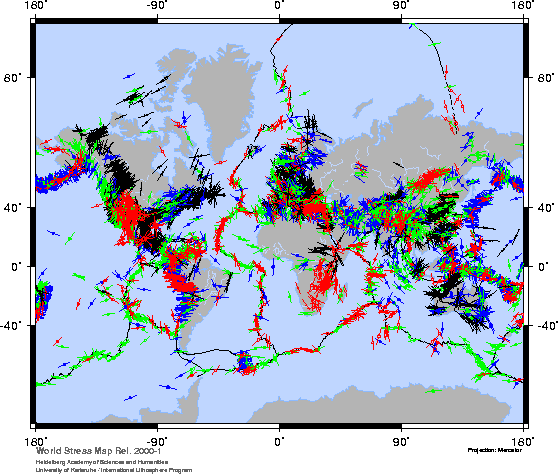




Next: Math and Method
Up: WSM manipulation: Artman, 2001
Previous: WSM manipulation: Artman, 2001
The motivation behind this analysis was the relatively simple-minded
observation that while local stress azimuth measurements tend to be
quite uniformly quasi-parallel, this quality does indeed diminish at
long distance. Therefore in the interest of determination if this was
a simple result of distortion of linearity due to map
projections, or a real correlation of the data due to larger
processes, the maps had to be made.
While it is still unclear what the physical meaning of this locus is,
or whether or not is is reasonable to perform the analysis on data
originating in differing stress regimes (as described by
(1)), the data are showing a focusing that I believe
needs a plausible explanation. Whether this explanation will involve
a ridge-push mechanism after (8), basal drag from
mantle circulation after (10), glacial rebound or, most
likely, regional differentiation of a combination of all of these (and more).
It is my belief that the next step in such research is to produce many
map subsets and overlay these with maps of various other geologic
observations to search for clues as to the underlying source of these
patterns. Hotspots, active margins, subduction, retreated glaciation,
collision zones, triple junctions, failed third arms, and more could
all contribute to such long-scale intra- and inter-plate stress
transmission of stress. In the long-shot category I would even hazard that we
could gain incite into back-arc spreading and Chinese energy flux centers.
wsm_nolegend
Figure 1 WSM down-loadable at ref'd
web site. Legend not included to minimize business. Notice convergence
zones in east Africa and coast of Norway. Legend not included to
minimize business: Colors denote stress
regimes, symbols denote methodology of measurement.






Next: Math and Method
Up: WSM manipulation: Artman, 2001
Previous: WSM manipulation: Artman, 2001
Stanford Exploration Project
3/24/2001
